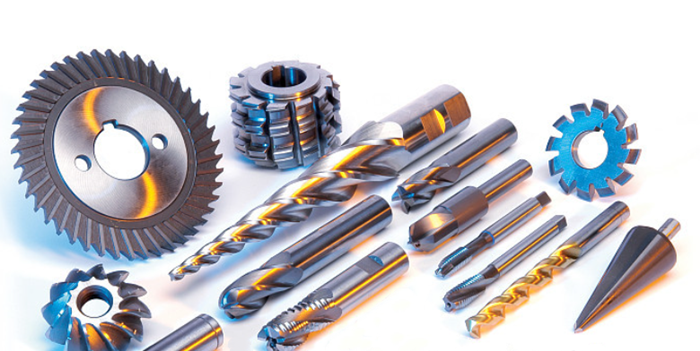Carbide VS HSS drill bit
A drill bit is a cutting tool with circular cross-section that create holes in an alloy materials. The commonly used drill bits mainly include spiral bit, flat bit, center bit, deep hole bit and bush bit. Reaming and countersink drill bits may not be used to drill holes in solid material, but they are traditionally considered drills. High-quality drill bits are generally made of carbide and high-speed tool steel while the former can cut two to three times faster than the latter.

The carbide drill bit is made tungsten carbide powder as matrix and cobalt powder by pressing and sintering as its binder. It usually contains 94% tungsten carbide, 6% cobalt and 1% other metals, also known as tungsten steel. Tungsten carbide, cobalt carbide, niobium carbide, titanium carbide and tantalum carbide are the common components of tungsten steel. The grain size of carbide component (or phase) is usually between 0.2 to 10 microns and the bonding metal is generally iron group metal, commonly used is cobalt, nickel, so there are tungsten cobalt alloy, tungsten nickel alloy and tungsten titanium cobalt alloy. Tungsten steel bit material sintering molding is to press the powder into a blank, and then into the sintering furnace heating to a certain temperature (sintering temperature), and keep a certain time (insulation time) and then cooling to get the desired performance of tungsten steel.
The hardness and strength of carbide drill bit are not only related to the content of tungsten carbide and cobalt, but also to the powder particles. The average grain size of tungsten carbide phase is less than 1 micron. This drill has not only high hardness but also excellent compressive and flexural strength. The carbide bit can be divided into solid carbide bit, carbide indexable bit, welded carbide bit and carbide crown bit according to the material how it’s made. Some bits are made entirely of carbide alloy, while others have a welded shank, that is, a drill shank made of stainless steel and each bit is suitable for specific machining.
High-speed steel (HSS) is a high carbon tool steel containing lots of tungsten and cobalt and is rich in molybdenum, tungsten and vanadium. HSS bit is a type of alloy bits made of HSS and offer combining properties such as excellent high hardness, wear resistance, good strength and toughness, heat resistance and corrosion resistance. These properties are possible to be attained due to a special microstructure, composed of a matrix around 65 HRC even in high-temperature in the case of high-speed cutting.
HSS drill is mainly used to manufacture complex thin blade and impact-resistant metal cutting tool, but also can manufacture high temperature bearing and cold extrusion die, such as turning tool, drill bit, hob, machine saw blade and high demand molds. But it also has poor toughness, brittle big shortcomings, in order to improve the hardness and wear resistance of drill bit, can be substrate chemical vapor deposition layer of 5 ~ 7 microns on the high speed steel hard titanium carbide (TiC) or titanium nitride (TiN), or inject titanium, nitrogen, and carbon ion implantation to a certain depth, the matrix or on top of the screw drill with physical method to generate a layer of film. Today here we are going to show you how to choose a high quality HSS drill bit. Firstly, how to judge the drill bit from its surface color?
High quality polished HSS bits are often white, and of course, rolled bits are also white to be fine ground. Generally speaking, the nitriding bit is black, which is a chemical method to increase the hardness of the tool by placing the finished tool in a mixture of ammonia and water vapor and holding it for 540~560 ° c. The Tan bit is generally cobalt bit. The cobalt bit, originally white, turned a tan after grinding and atomizing. The gold M42 (Co5%) Ti-plated bit has a hardness of HRC78, higher than that of cobalt-bearing bits (HRC54). Color is not the only factor to judge the quality of the drill, so how to choose the drill? Generally speaking, the white ones are generally fully polished HHSB drills, the gold ones are titanium nitride plated, and the black ones are either nitride alloy steels or carbon tool steels.


